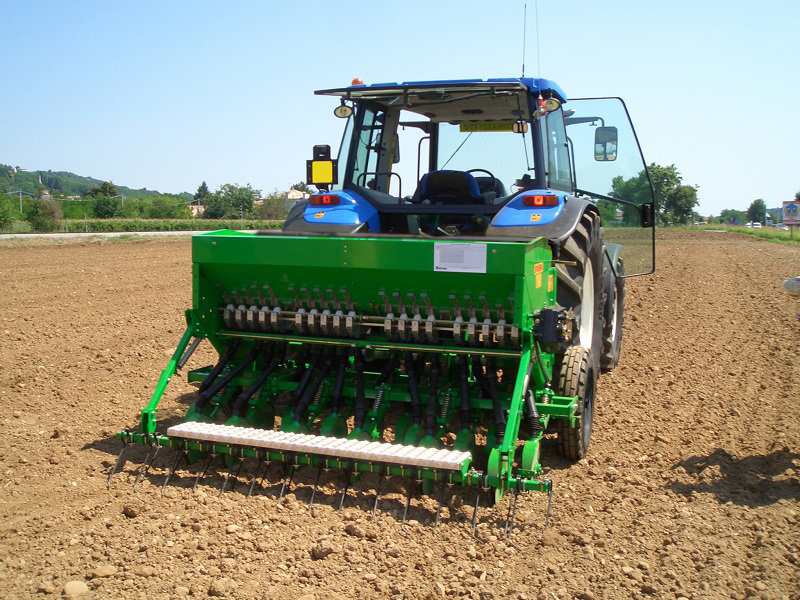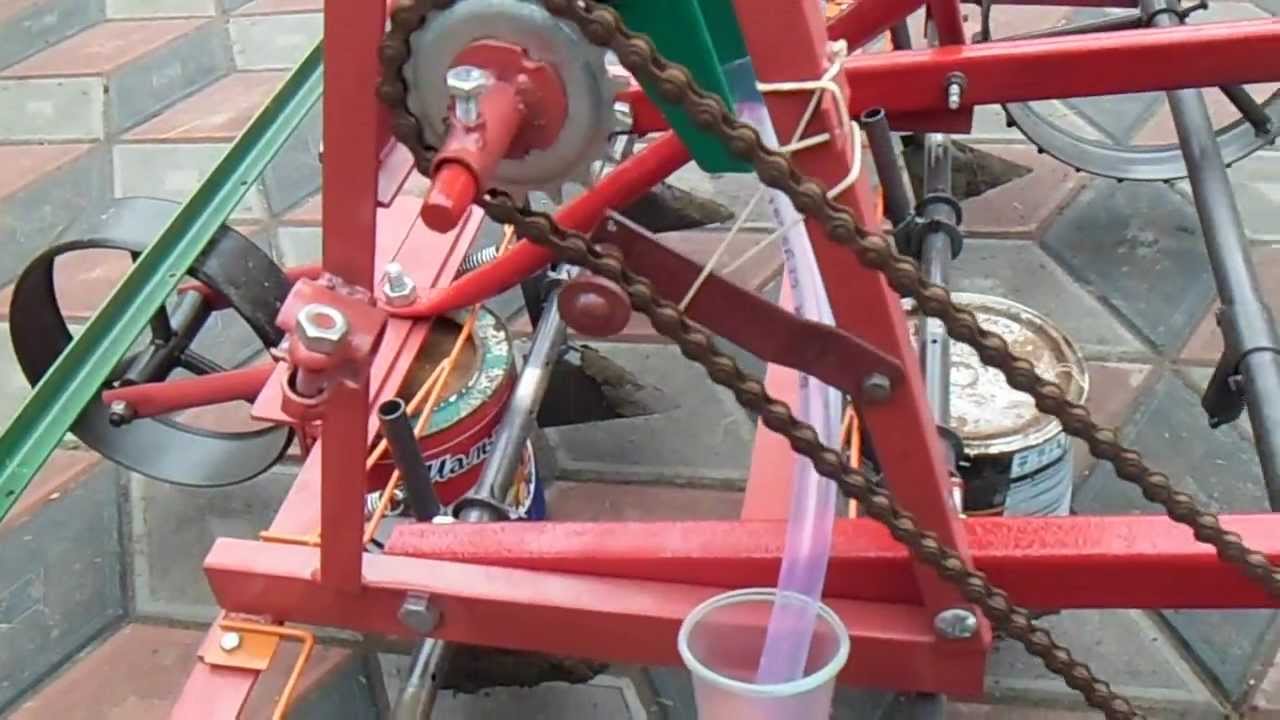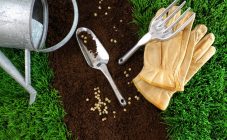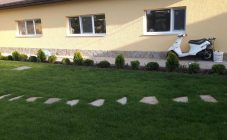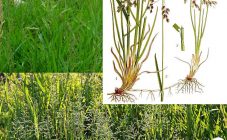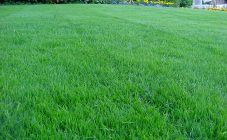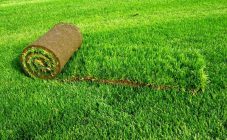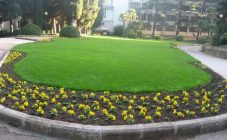Content:
A person associated with agricultural work tries to grow vegetable crops in compliance with all the rules of agricultural technology. It is not always possible to do this quickly. After all, you need to plow the land correctly, plant seeds, evenly distribute them in the grooves, then thin out the seedlings and perform many more labor-intensive actions.
Without modern technology, it is impossible to cope with all the work on time. A seeder can simplify and facilitate the work of farmers.
Household seeder design
Any seeding machine has the following main parts:
- container for seed;
- sowing device for uniform supply of seeds to the seed tube;
- seed tube for directing and transferring the flow of seed from the seeding unit to the coulters;
- openers for squeezing grooves in the ground where the seed will go;
- a mechanism for filling grooves with earth and leveling the surface of the sown area.
Principle of operation
The principle of operation is quite simple.
- A smart car moves across the land and makes grooves in the ground.
- Sows planting material into them. At the same time, the optimal distance between the seeds and the depth of placing seeds of different sizes in the soil are observed.
- Fills the furrows with earth and levels the surface of the sown field.
Using a seeding machine minimizes the time spent on the work and the efforts of the farmer. In the process of activity, he only monitors the serviceability of mechanisms.
Types of seeders used in the household
The modern agricultural machinery market is saturated with various types. They can be divided into three groups.
By sowing method
Depending on the order of distribution of seed material over the land plot, the following sowing machines are distinguished:
- Privates. With their help, seeds are planted in rows located at different distances from each other.
- Square - nested. Designed for planting seed nests in a specific order, as if along the tops of a rectangle or square.
- Nesting. Needed for scattering a group of seeds in rows.
- Dotted (single-grain). A wide-row sowing is carried out, while placing the seeds at equal intervals.
- Scattered. They are used for this type of sowing when seeds and fertilizers are evenly scattered over the soil surface. Seeders - Spreaders can be used in winter to spread sand on garden paths.
By the nature of traction
Depending on the object that moves the seeder, the following types are distinguished:
- Attached - attached to a tractor. Such seeders are used by farmers with a lot of land.
- Equestrian, which is attached to the horse with special cables.
- Manual, moved by human efforts.
- The pneumatic seeder on the chassis is a stand-alone model with manual control and an internal combustion engine.
By culture
Sowing units can be:
- universal - suitable for sowing row crops, vegetables and grain crops;
- specialized - for sowing seeds of only one crop;
- combined, having 2 hoppers - for seeds and fertilizers.
Features of operation
The seeder is not only a seed and fertilizer spreader, but also a convenient unit for cultivation. The improved technology allows you to cultivate the soil, so that with prolonged use of the site, the land will not deplete so quickly, and the fertility will decrease. When using it, it is necessary to take into account the versatility and other factors of the machine:
- It is not recommended to buy a universal seeder without an adjustable valve, otherwise the grain will get stuck or pour out too quickly and unevenly.
- A homemade attachment needs constant checking. Regular installation of the mechanism will provide peace of mind during work and the absence of unforeseen situations.
- When sowing the area, it is necessary to use useful fillers, for example, humus in large quantities, grain residues or spoiled cereals.
Precision seeders
The precision planter has long been known to farmers planting a variety of crops on their plots. With its help, it is possible to plant when it is required to comply with strict rationing of the amount of seed material per running meter of soil. The mechanism calculates the best seed spacing to the nearest millimeter. Such filigree work is necessary in order not to further thinning the seedlings. Smart car:
- easy to use;
- has a small mass;
- easy to use;
- subject to the rules of operation, they will last a very long time.
Purpose and use of the landing cone
The manual planting metal cone can replace the seeder in small areas. The tool is used when planting plants at different distances from each other. By making indentations, you can clearly mark the boundaries of the holes, which will facilitate further planting. The seeder for carrots and other crops, which are planted with the help of grains, is a unit that can easily replace the planting cone. Less commonly, it is used as an analogue for bulbous crops.
Seeder Spreader Features
The seeder spreader differs little from one species to another. The most convenient is an adjustable capacity, but it cannot be installed on a seeder for a walk-behind tractor. For a homemade planter, it is better to use a plastic box made of durable polymers.
Seeder do it yourself
A seeder for grain with their own hands can be prepared by any gardener. The main thing is to use the details at your discretion so that you get the following frame:
- Compartment for beans with a hole at the bottom.
- A movable gear on which the unit moves. It also functions as a seed spreader.
- Separate fertilizer tank and nutrient delivery system to the ground.
- Installation for covering seeds with soil.
Such a manual seed and fertilizer spreader will reduce the working time of the owners. To create the most convenient unit, it is recommended to draw up a drawing and use it during assembly. In appearance, the machine will be close to a garlic seeder for a walk-behind tractor.
Household seeder care and selection
Regular cleaning is the only prerequisite for proper operation of the drill.
The choice of a seeder depends on what characteristics the owner needs. It is worth considering that the units for some crops are very similar to each other: for example, the beet planter is similar in its structure to the unit for radishes and other vegetables that emerge from seeds with a diameter of up to 7 millimeters. A seeder for garlic when changing the nozzle is suitable for onions, the plant will shoot arrows no less quickly with such a planting.

